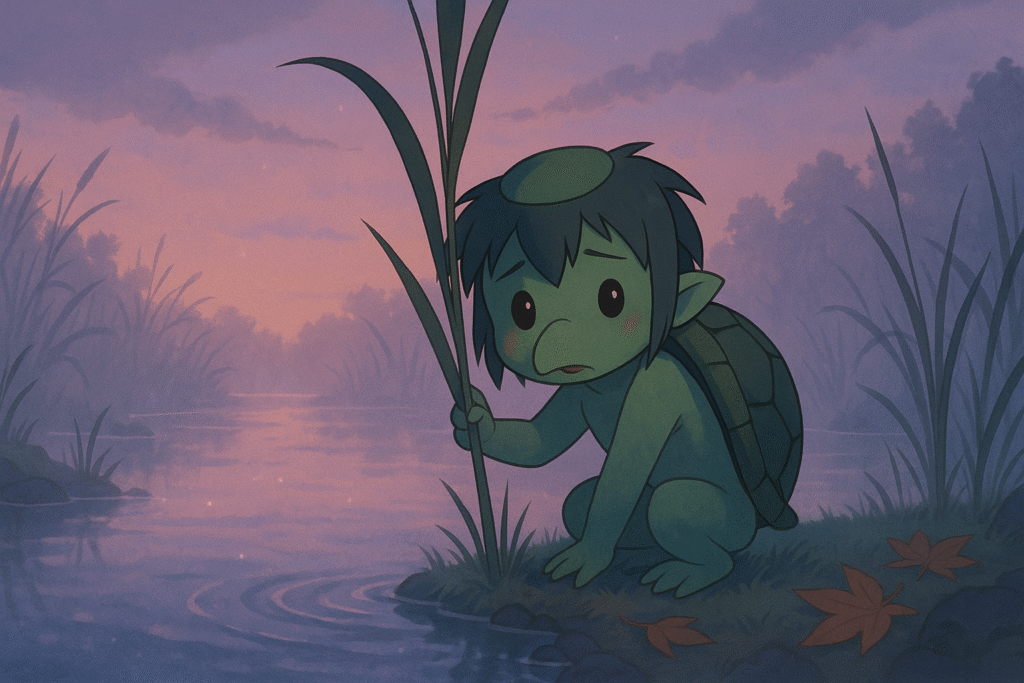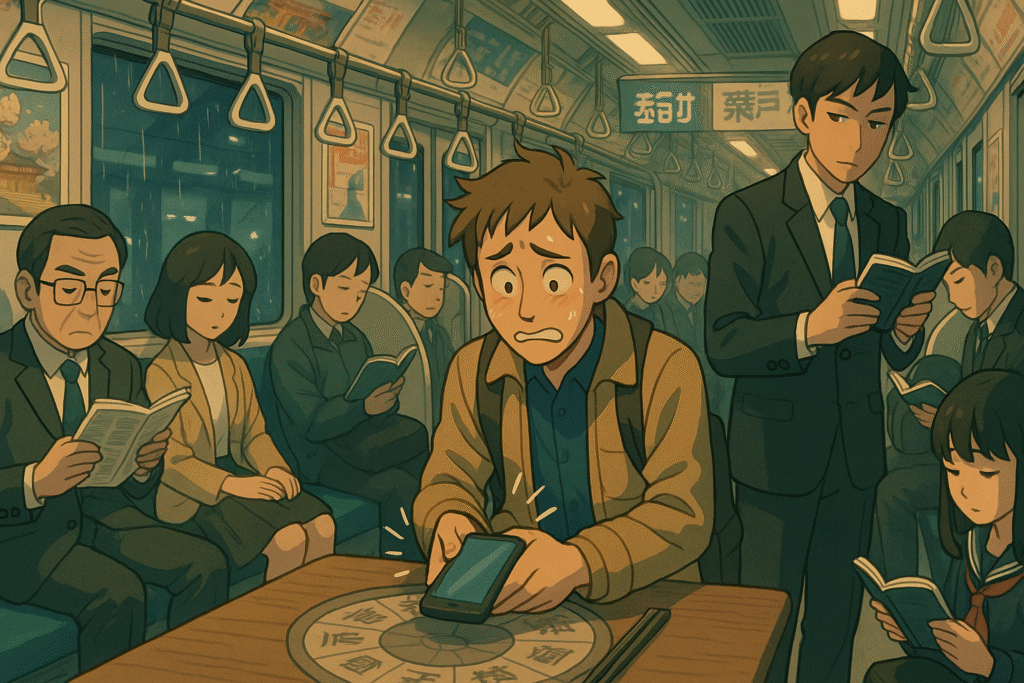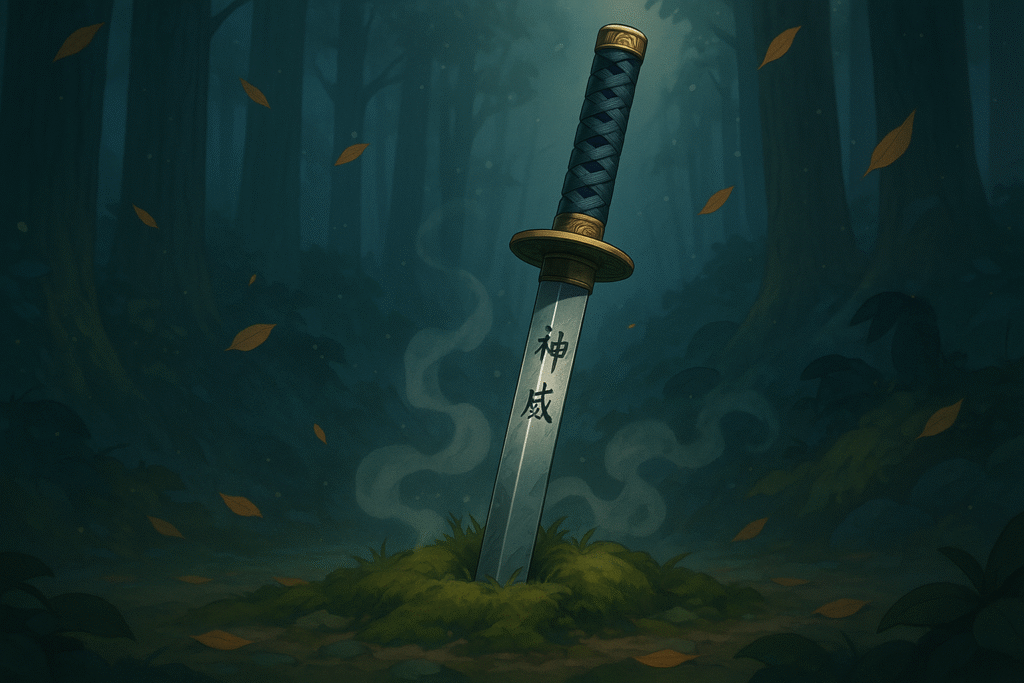When it comes to Japanese folklore, few creatures capture the imagination quite like the kappa urban legend. These amphibious yokai (supernatural beings) have terrorized Japanese waterways for centuries, yet in modern times, they’ve transformed into cute mascots and beloved characters. But what exactly is the truth behind the kappa urban legend, and how did these once-feared river demons become Japan’s adorable cultural ambassadors?
If you’re fascinated by Japanese folklore and looking to deepen your understanding of the language that created these myths, check out our free Japanese learning guides to start your journey into this rich cultural landscape.
Origins of the Kappa Urban Legend: From Terror to Charm
The kappa urban legend began as a cautionary tale to keep children away from dangerous bodies of water. These aquatic creatures were once genuinely feared throughout Japan, with their reputation for drowning unwary swimmers and livestock serving as a powerful deterrent against careless water activities.
Originally, the kappa urban legend varied significantly by region. Before the standardization brought by Edo-period publishing, these creatures went by various names:
- Kawatarō or gataro (Kyoto/Osaka region)
- Medochi (Tōhoku)
- Mizushi (Hokuriku)
- Enkō (Chūgoku and Shikoku)
- Hyōsube (Kyūshū)
What’s particularly fascinating about the kappa urban legend is how drastically its physical description has changed over time. Early accounts described kappa as mammalian creatures resembling monkeys or otters, not the turtle-like amphibians we recognize today.
The Physical Evolution of the Kappa Urban Legend
Ancient Descriptions
The earliest documented reference to what we now call the kappa appears in the 15th-century dictionary Kagakushū, which describes how aging otters transform into “kawarō” – an early name for kappa. This connection to real animals suggests the kappa urban legend may have originated from misidentified wildlife sightings combined with drowning incidents.
Modern Appearance
Today’s standardized image of the kappa urban legend features:
- Child-sized green bodies
- Circular water-filled dishes on their heads
- Bird-like beaks (often yellow)
- Turtle-like shells on their backs
- Webbed hands and feet
This modern kappa urban legend appearance crystallized primarily during the 19th century, heavily influenced by ukiyo-e artists from Edo (modern Tokyo). Master artists like Katsushika Hokusai depicted kappa with turtle shells and pointed beaks in his famous Hokusai manga collections, solidifying this imagery in Japanese cultural consciousness.
As noted in our Winter Haiku article, traditional Japanese art forms have long served as vehicles for cultural storytelling, preserving mythical creatures like the kappa in the collective imagination.
The Dark Side of the Kappa Urban Legend
Behind the cute exterior of today’s kappa mascots lies a much darker kappa urban legend. Traditional folklore described these creatures as genuinely terrifying:
- They would drag humans, horses, and cattle underwater to drown them
- Kappa were said to devour victims’ internal organs, particularly targeting a mythical organ called the “shirikodama” located inside the anus
- They were known to sexually assault women and force them to bear their children
- Contact with kappa could cause madness or illness
These disturbing elements of the kappa urban legend served an important purpose – they personified the very real dangers of drowning and waterborne disease. Similar to how we explored traditional guardian figures in our article about Japanese bear hunting dogs, kappa represented nature’s dangers in comprehensible form.
Want to explore Japan’s culture?
Discover Japan’s rich culture, traditions, and hidden gems with our expertly crafted guides. Get insider tips on travel, food, and history. All for free!
The Cultural Transformation of the Kappa Urban Legend
From Feared to Revered
Interestingly, despite their malevolent reputation in the kappa urban legend, these creatures could sometimes become beneficial to humans. Numerous local legends tell of captured kappa who, in exchange for mercy or the return of a severed limb, would:
- Share medical knowledge or healing techniques
- Swear to protect villagers from drowning
- Become celebrated as minor water deities
This transformation from monster to guardian is reflected in several shrines throughout Japan that honor kappa, such as the Kahaku Shrine in Kōchi Prefecture, which holds an annual kappa festival.
The Kappa’s Modern Makeover
The most dramatic shift in the kappa urban legend occurred in the 1950s when manga artist Shimizu Kon introduced endearingly cute kappa characters in works like “Kappa Kawatarō” and “Kappa Tengoku” (Kappa Heaven). This sparked a kappa boom that forever changed public perception of these yokai.
Today, the kappa urban legend has been thoroughly commercialized. Kappa appear as:
- Mascots for Tokyo Citizen’s Day
- Commercial characters for snacks and sake
- Local tourism ambassadors
- Warning symbols on “No Swimming” signs (a clever nod to their traditional role)
Much like the dramatic emotional expressions we examined in our article on anime emotions, the kappa’s transformation represents how traditional elements can be reinterpreted for modern audiences while retaining their cultural significance.
The Cultural Impact of the Kappa Urban Legend Today
The evolution of the kappa urban legend demonstrates Japan’s unique ability to preserve traditional folklore while adapting it to contemporary sensibilities. Today’s kappa retain just enough of their cautionary purpose – they still appear on warning signs near water – while becoming commercially viable characters that appeal to modern audiences.
This duality reflects broader patterns in Japanese popular culture, where ancient yokai traditions influence everything from mainstream anime to local tourism campaigns. The kappa urban legend endures precisely because it has been willing to change with the times.
FAQ About the Kappa Urban Legend
What is a kappa in Japanese folklore?
A kappa is a water-dwelling yokai or supernatural creature in Japanese folklore that was traditionally believed to drown people and animals in rivers and ponds.
Why do kappa have dishes on their heads?
Kappa have water-filled dishes (sara) on their heads that are the source of their power. If the water spills, the kappa becomes weakened or paralyzed.
Are kappa good or evil?
Kappa were traditionally considered dangerous and malevolent, but modern interpretations have softened their image to be more mischievous or even helpful.
How can you defeat a kappa according to legend?
According to legend, you can defeat a kappa by bowing to it, as it will bow back and spill the water from its head dish, weakening it substantially.
Do people still believe in the kappa urban legend in Japan?
While few modern Japanese believe kappa literally exist, they remain important cultural symbols that are celebrated in festivals, shrines, and popular media throughout Japan.
Connecting Past and Present Through the Kappa Urban Legend
The kappa urban legend reminds us that folklore evolves to meet the needs of each generation. What began as a terrifying warning against the dangers of drowning has transformed into a beloved cultural icon that still carries echoes of its cautionary origins.
For those interested in exploring more Japanese cultural phenomena, our articles on NEET culture in anime and Japanese fan traditions offer additional insights into how traditional concepts continue to shape modern Japanese society.
As we’ve seen with the kappa urban legend, Japan’s supernatural traditions remain vibrant by adapting to new contexts while preserving their essential cultural significance – a balancing act that defines much of Japan’s relationship with its rich folkloric heritage.
Love Japan? Stay in the Loop!
Get the best of Japan straight to your inbox: language, culture & travel insights!




